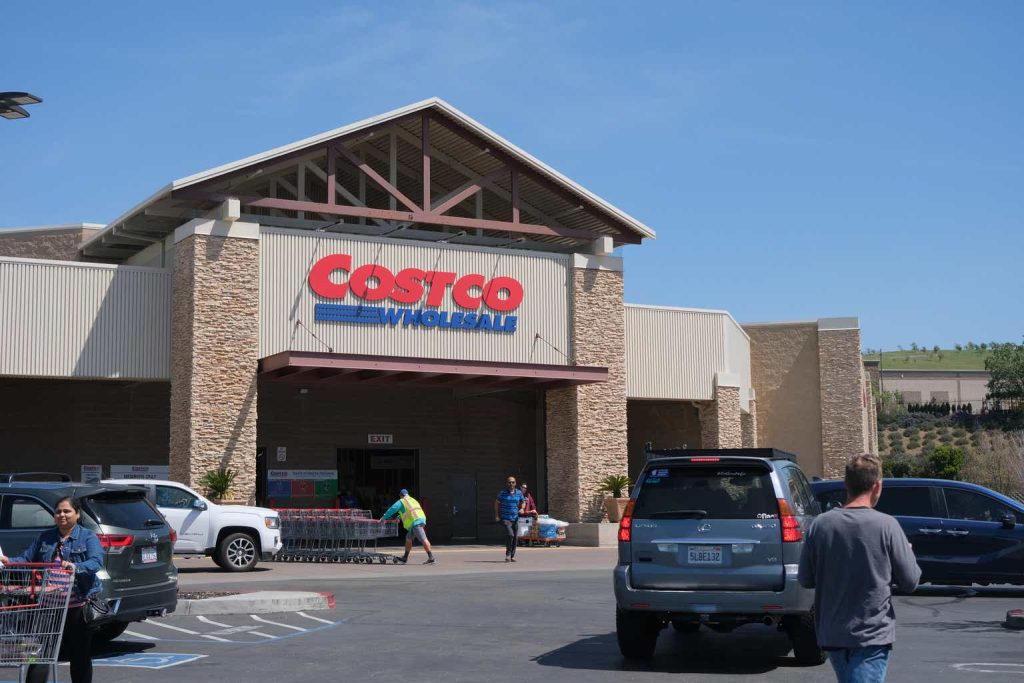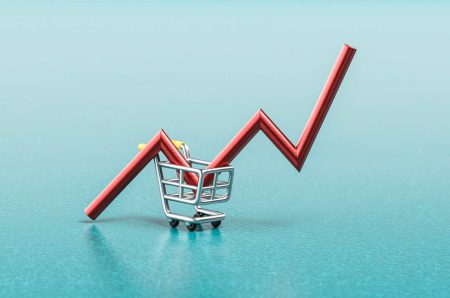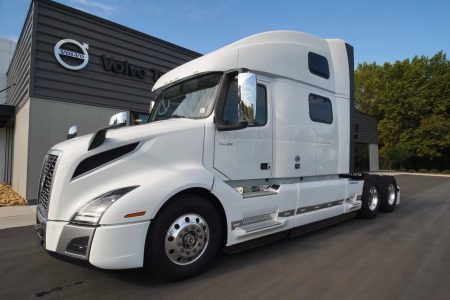Investment Thesis
As concerns about a potential US recession loom, investors are worried that companies, like Costco Wholesale Corporation (NASDAQ:COST) may fall victim. Other US retailers, such as Dollar Tree, Inc. (DLTR), have already reported signs of weakening consumer spending (which I will expand on later in this article), indicating that some segments of the market are under pressure. At first glance, Costco might appear vulnerable to these same recessionary fears. However, I think this perspective overlooks the advantages that Costco possesses, positioning themselves to not only withstand economic downturns but to actually benefit from one. The main offering of Costco is that consumers have the option to purchase goods in bulk at discounts, which greatly appeals to friend groups or college students living in a singular household.
This model of offering bulk goods at competitive prices seems to maintain its appeal during the current times of higher economic stress among lower and middle-income US consumers. For example, according to the July 2024 net monthly sales report, Costco posted a 7.1% increase in sales, bringing in $19.26 billion compared to $17.99 billion in the same month last year. I believe this growth demonstrates that despite a slowdown in general consumer spending, the bulk retail giant can attract cost-conscious consumers looking to maximize value. An example is their famous 3lb, $4.99 rotisserie chicken.
With this, Costco’s strategy is not only good at helping preserve consumer foot traffic, but it’s also good at enhancing shareholder value. Diving into Costco’s investor metrics, the company has produced an impressive return on common equity, standing at 31.64% over the trailing twelve months, far above the sector median of 10.70%. The company is incredibly capital-efficient and great for consumers.
With Costco’s ability to maintain strong sales growth, even in the face of economic headwinds, I think there is still a positive future ahead, even if the economy slows. Unlike other retailers that may struggle during a recession, Costco’s bulk pricing, coupled with their consistent value offerings, makes them a compelling investment for both consumers and investors alike. I think Costco remains a strong buy.
Why I’m Doing Follow-Up Coverage
Since my analysis of Costco in June, Costco has continued to outperform the broader market, with shares increasing by roughly 0.16% including dividends, beating the S&P 500 which decreased by roughly 0.88%. As I mentioned above, In July, Costco reported a 7.1% increase in monthly net sales, reaching $19.26 billion compared to $17.99 billion in the same period last year. This strong performance stands out, especially as other retailers face slowing consumer demand due to the effects of inflation starting to crimp demand.
It is clear that US consumers are struggling. Goldman Sachs found:
“spending growth has slowed from above 3% in the second half of last year to a trend rate of probably around 2% today.”
On this same note, nominal (so not adjusted for inflation) retail sales in the US edged up only 0.1% in May. It’s a clear sign that (net of inflation) the consumer is starting to slow.
Although general consumer spending is down, Costco is not feeling these pressures, which again I think is due to their ability to appeal to cost-conscious consumers.
Even with a recent membership fee hike of $5-$10 annually, Costco’s value proposition remains compelling. Consumers are turning to Costco to stretch their dollars further, leveraging their bulk offerings to maximize savings. This trend is particularly evident among groups like college students and young professionals, who use peer-to-peer payment platforms such as Venmo and Cash App to share the costs of bulk purchases. One person buys paper towels or other goods in bulk and then splits it among the group, so everyone gets a better unit price.
This follow-up coverage is meant to demonstrate how Costco is bucking this trend and why the stock is still a strong buy in my opinion even if shares trade at a high forward P/E multiple.
Deep Dive: What Makes Costco Special?
Costco’s unique business model has positioned themselves as a standout performer in the retail sector, even during these economically challenging times. On top of the 7.1% sales increase I touched on earlier, for the first 48 weeks of this year, net sales jumped to $229.81 billion, which is also a 7.1% increase from the year prior. The company is humming with consistent growth, the rest of US retail is not doing the same. In other words, they are doing something that is statistically significant.
To help really hit on this point, I want to look at normal discount retailers, such as Dollar Tree. While they specialize in offering lower cost non-discretionary goods, their story is not nearly as strong. From Dollar Tree’s Q1 earnings call:
Adjusted operating income was $436 million, a 3% decrease from last year – Dollar Tree Q1 earnings call.
Net sales also only increased 4.2% YoY for Dollar Tree vs. the 7.1% rate Costco is running at.
Dollar Tree’s slipping earnings appear to be due to their consumers struggling in an economic consumer by the effects of high inflation. While the company stated they believe things are beginning to turn around, they also mentioned during the earnings call that:
…lower income consumers continue to deal with inflation, higher interest rates, and reduced government benefits -Dollar Tree Q1 earnings call.
In essence, Dollar Tree’s strategy is resulting in lower net income and a group of consumers coming to their store that are price conscious. Costco is doing the opposite with their membership fee as a barrier to entry and using bulk purchases to force price-conscious consumers to shop together. This is helping reinforce their business model (whereas Dollar Tree is betting on individual price conscious consumers shopping at their stores).
There’s more than anecdotal evidence to this point about buying in bulk in friend groups and then splitting the tab. A survey completed by Advantage Solutions, a market research firm, found that:
Almost four in 10 shoppers between the ages of 25 and 34 split more bulk groceries with friends, neighbors, roommates, and family, according to a June survey of over 1,000 shoppers…
…and…
…A third of all people questioned in the survey said they shop this way.
With this younger age group just beginning their careers, buying in bulk is a great way to reduce costs. This is something Dollar Tree cannot offer their consumers, yet is clearly a winning strategy in this economy. It’s fueling Costco’s unique outperformance.
Given the power to buy in bulk is appealing to so many consumers (and keeping sales growth strong in Costco’s stores) the retailer plans to increase their membership fees, but I don’t think this will drastically affect the size of their consumer base. Starting on September 1st, the company will raise their year-long Gold Star membership from $60 to $65 and their Executive Membership from $120 per year to $130. In the past, Costco’s renewal rate has been roughly 90%, meaning they have a very loyal consumer base (these are incredible renewal rates for any subscription service for consumers). With this, I don’t think a $5-$10 membership increase will cause numerous members to cancel, especially considering the overall savings that come from it. Costco gets higher margins from their membership business, consumers continue to get a great deal. I think it’s a great setup, above all for shareholders.
Valuation
I talked about this in June, but on the surface, it’s clear that Costco’s valuation appears much higher than others within this sector. But, as I said in June, I think it’s warranted. Even though Costco stock is trading at a forward non-GAAP P/E ratio of 53.60, 211.09% higher than the sector median of 17.25, I think it’s really a reflection of the company’s ability to take their impressive business model and continue to grow it.
The best way to access this, in my opinion, is to look at the company’s return on common equity (ROE) I mentioned before. To reiterate, this stands at an impressive 31.64%, far exceeding the sector median of 10.70% and a 195.67% premium. Costco is clearly taking its strong profits and investing them at a return that beats most publicly traded stocks or fund managers.
To this same point, Costco’s cash flow metrics further support this premium valuation with premium growth. The company’s operating cash flow grew by 22.92% year-over-year, also significantly outpacing the sector median of 14.48%. Robust cash flow really provides Costco with incredible financial flexibility to continue investing in growth opportunities, such as international expansion, which I think remains a crucial driver of what their future performance will be.
With this strong execution, I still think Costco has upside potential. Their forward enterprise value-to-sales (EV/Sales) ratio is equal to 1.48, 15.44% below the sector median of 1.75. However, due to their ROE being 195.68% above the sector median, I really think this number deserves to be much higher.
If we see this EV/Sales ratio were to converge to the sector median, this would represent an upside potential of roughly 18.24%.
Risks
While I think Costco’s strengths are clear, it’s not a risk-free play (like any investment). One significant risk is the potential for certain consumer groups, who do not utilize Venmo or Cash App to split purchases, to cut back on purchases at the retail giant as the economy slows. Think of middle-class families that buy stuff in bulk because they consume it all, but cannot split these bulk purchases with others.
If consumer groups like middle-class families start to see their spending fall off and this impacts Costco’s overall sales, this would likely directly hit Costco’s P/E. In essence, while their store would still be growing, their shares could be sinking. Given the current P/E ratio of 53.60, I will admit that any shortfall in earnings or a broader market downturn could lead to a serious re-rating of Costco’s stock. The company needs what they are doing now to continue to go right to support this valuation. They do not have a lot of downside variance in their operating model that the market would tolerate. But it’s for this exact reason that I actually continue to be so bullish.
Costco’s long-standing track record of navigating multiple economic environments, from the pandemic over the last few years to now inflationary pressures, means they have an incredible ability to adapt and thrive. Economic tension will always be a risk for Costco’s business. But, as with any stock, investors are counting on management to execute. I believe they will.
Bottom Line
Despite overall concerns of the US consumer, Costco continues to demonstrate their strength as a bulk retailer, capable of thriving even in slower economic conditions. Costco’s ability to attract and retain customers through their bulk pricing model, even amid this inflation-driven economic uncertainty, really highlights their unique value proposition as a retailer. While shares still sport a high valuation, the company’s excellent financial performance, including impressive sales growth and return on equity, justifies this premium pricing in my opinion.
I, personally, believe Costco is a perfect example of a GARP (Growth at a Reasonable Price) investment. Here, paying the premium for quality appears justified. I still believe shares are a strong buy. I feel good about their ability to deliver consistent returns for shareholders.
Read the full article here
















